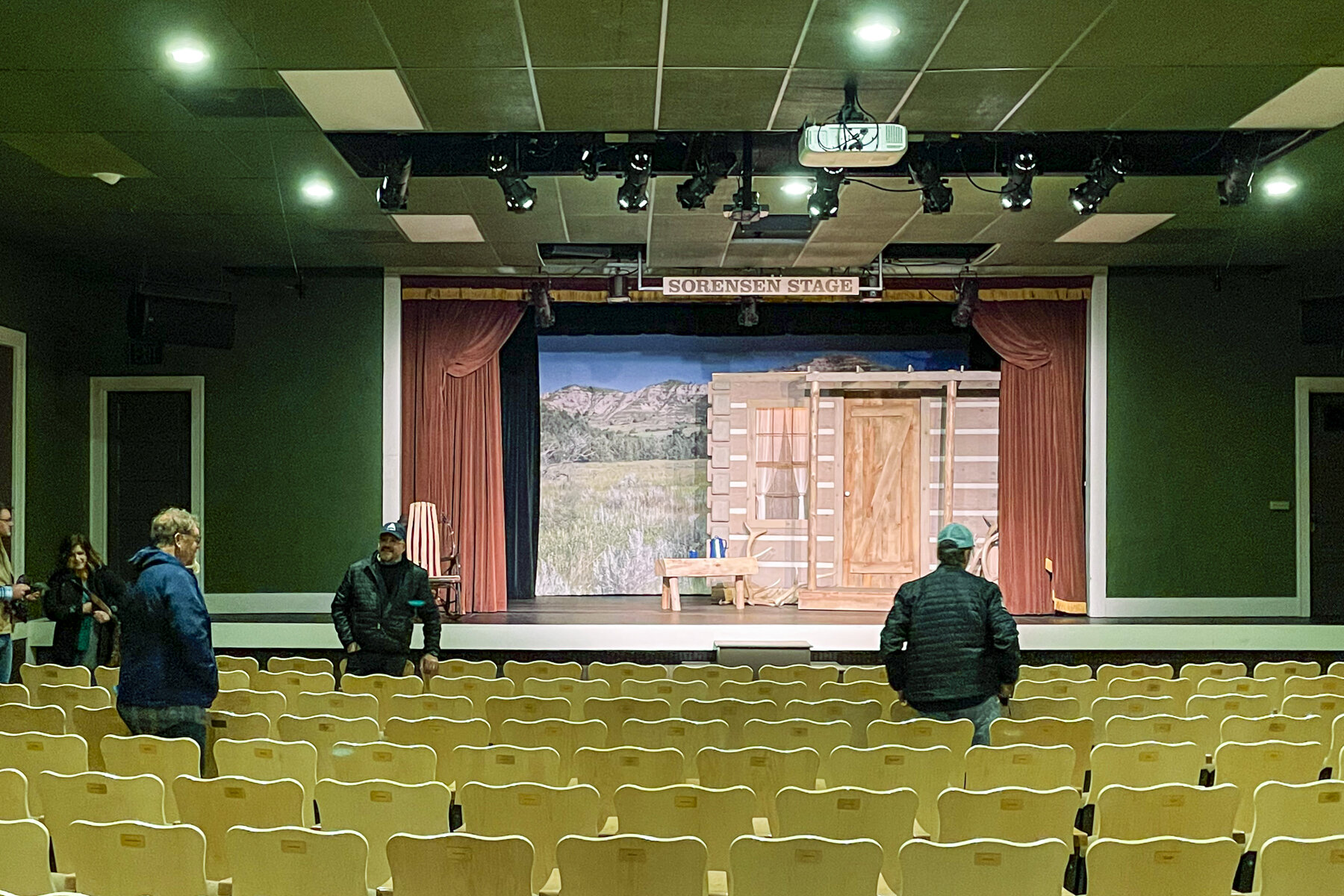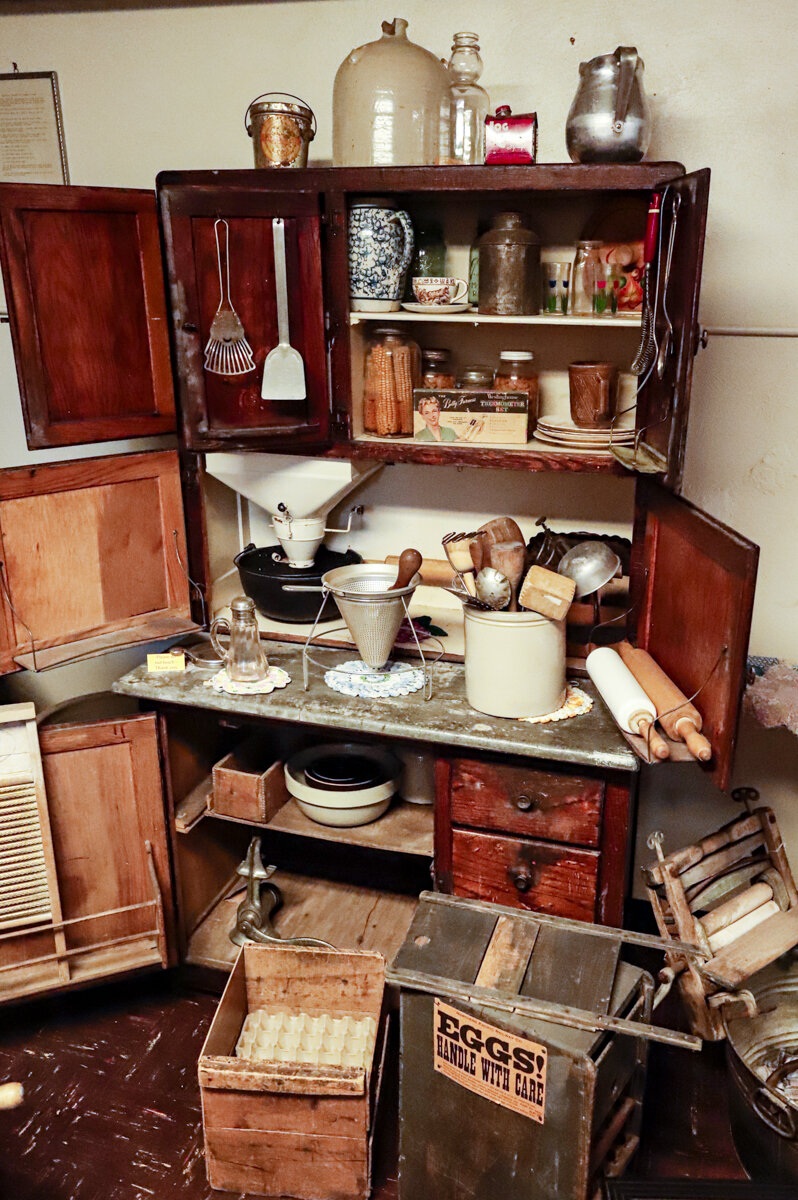
August 13-27, 2021
MEDORA, NORTH DAKOTA
“Medora is a city in Billings County, North Dakota, United States. The only incorporated place in Billings County, it is also the county seat. Much of the surrounding area is part of either Little Missouri National Grassland or Theodore Roosevelt National Park. The population was 112 at the 2010 census.” Wikipedia
Medora is the epitome of a tourist town. While most people come to this burg to enter the South Unit of Theodore Roosevelt National Park, once here they find much more to do. Almost the whole town is devoted to tourism. There are hotels, restaurants, museums, gift shops, and little else. The locals I experienced were welcoming and friendly, and the more I learned about Medora the more I fell in love with it.
The story of Medora revolves around three men: the Marquis de Mores, Theodore Roosevelt, and Harold Schafer. The first founded the town, the second brought national attention to it, and the third revived the struggling town years later.
The town was founded in 1883 by French nobleman Marquis de Mores, who purchased over 4000 acres of land in order to start a cattle business. He named the town after his wife, Medora von Hoffman. Both came from families with money. The Marquis tried revolutionizing the cattle industry by building a meat-packing plant and used refrigerator cars cooled with ice to ship the dressed meat to Chicago. He built a summer home/hunting lodge, later called the Chateau de Mores, on the outskirts of the town. He also built some other businesses in town, including a stagecoach company with daily trips to Deadwood, SD. The Marquis had a big ego, which led to him being involved in a few duals, earning him quite the reputation. He was charged and tried for murder on at least one occasion, and was acquitted. His ego, reputation, and bad business sense, along with some bad winters caused almost all of his businesses to fail, and he sold his interests around 1889. The Chateau de Mores has been preserved, and is now a museum.
At about the same time the Marquis was establishing Medora, a young Theodore Roosevelt came to the area to hunt buffalo. He spent about two weeks in the area and finally bagged one, but he also left the area as the owner of the Maltese Cross cattle ranch. On Valentine’s Day in 1884, Roosevelt unexpectedly lost both his wife and his mother within hours of each other. To deal with the grief he took refuge at his North Dakota ranch. He purchased more property and hired two friends, hunting guides from Maine, to build a home and run the new ranch, named Elkhorn Ranch. Over the next few years Roosevelt split his time between New York and North Dakota. His cattle business lost money and I assume as he got more involved in New York politics, he spent less and less time at Elkhorn Ranch, eventually selling it to a local rancher. Roosevelt returned to Medora as a presidential candidate and later claimed that he would not have become president if not for his time in Medora.
Fast forward to the 1960s. Buildings were falling apart, and the town was in disarray. Enter Harold Schafer, a self-made businessman and founder of the Gold Seal Company, the maker of Mr. Bubble, Glass Wax, and other nationally known household products. At the request of a friend Schafer purchased the Roughrider Hotel and Ferris Store. When the state legislature refused to appropriate money to restore the buildings Schafer spent his own money to do so. Schafer fell in love with the area and spent a lot of money restoring the town, including purchasing an old theater built into the side of a hill in 1958 for a showing of a Theodore Roosevelt play called Old Four Eyes. Schafer and his wife decided they wanted to produce a family-friendly show that, had something for kids in it, paid tribute to Theodre Roosevelt, and had a big patriotic ending, thus the Medora Musical was started in 1965 and continues today. The Theodore Roosevelt Medora Foundation, established in 1986 with a multi-million dollar gift from Schafer, is now tasked with maintaining Schafer’s vision for Medora. The Harold Schafer Heritage Center tells the story of this entrepreneur and his love for Medora.
Medora also houses the Billings County Museum, which has a great collection of items telling the story of the people that settled in the area, and the North Dakota Cowboy Hall of Fame and the Center of Western Heritage and Cultures, telling the stories and honoring the culture of North Dakota’s Native American, Ranching and Rodeo communities.
The Old Town Hall Theater
This small theater in the center of Medora houses several shows to educate and entertain visitors. I attended “Magic Through Time” with Colin Zasadny, who thoroughly entertained performing mostly card tricks. Turned out Zasadny is from Cedar Rapids, Iowa. I also attended “The Teddy Roosevelt Show” with Joe Wiegand portraying the 26th President telling stories of his time in Medora. I would definitely recommend this show to everyone visiting the area.
The Old Town Hall Theater
A statue of Theodore Roosevelt outside the theater.
Inside the theater.
Joe Wiegand portraying Theodore Roosevelt.
Joe Wiegand portraying Theodore Roosevelt along with a Teddy Bear.
Joe Wiegand portraying Theodore Roosevelt.
One of the murals on the wall of the theater.
Chateau de Mores State Historic Site
The Marquis de Mores built this summer home and hunting lodge for his family and guests in 1883. Today there is an interpretive center/museum with a wing devoted to de Mores and a wing devoted to the Civilian Conservation Corps (CCC) who helped restore some of the property, along with work in Theodore Roosevelt National Park.
The Chateau is a 26-room, two-story, building housing many period pieces along with some original belongings of the de Mores’ family.
Also in Medora you will find what is left of the meat packing plant de Mores established and a small, court-yard-style park honoring de Mores.
A carriage in the museum.
One of the four stagecoaches used by the company de Mores established.
I found this fact about the horses used by the stagecoach company to be interesting.
A radio with external speaker in the CCC exhibit.
The Chateau de Mores
The Chateau de Mores
The dining room.
Original bottles found in the wine cellar. Most are sparkling water.
A washing machine
A hand-crank sewing machine.
The room where hunting guests would be housed.
It was noted that the Marquis' wife (often called the Marquise) was quite the sportsman also. There are many pictures of her riding side-saddle. Here are two of her saddles.
The commode and bathtub. The commode could be accessed from outside and had to be tended to regularly.
The family piano. Since this was the family's summer home, the piano was shipped to St. Paul to be stored during the winter as to avoid the bitter North Dakota winters.
A revolving bookcase. If/When I get a sticks-and-bricks residence again, I want one of these.
There were many hunting "trophies" hanging on the walls of the house. This set of Bighorn antlers is the only trophy original to the house.
The view from the veranda.
A pencil sharpener on the Marquis' desk.
The living room/parlor.
The monument to de Mores in the city park.
Packing Plant/City Park in Medora
What is left of the packing plant, destroyed by fire in 1907.
Harold Schafer Heritage Center
A small museum honoring the life of Harold Schafer, who spent his own time, talent, and treasure to build up Medora to what it is today. Harold Schafer is “Why Medora is here today.”
Schafer's desk from his Bismarck office.
A glance at the wall of his office. I love the quote, "The best way to stay young is to stay busy doing what you enjoy."
A display of some of the products Schafer's Gold Seal company produced. Besides Mr. Bubble, I distinctly remember my mother using Perfex.
A copy of Frederic Remington's The Bronco-buster.
A 1929 Roosevelt.
Billings County Courthouse Museum
Housed in the former Billings County Courthouse, this museum has a wonderful collection of artifacts telling the stories of the people of the area. For the $2 senior admission price, it was well worth my time.
A pioneer pantry. I was struck by the number of items used by my mother in our kitchen as I was growing up.
The museum had a nice display honoring area people who had served in various wars/armed conflicts our country has been involved in.
This bison skeleton, found in the area, is thought to be over 1000 years old.
The area was settled by Ukranians at one point. A local artist painted these eggs, which had a technical name, but I forgot to remember what it was called.
Another local artist carved these wood pieces. I thought hey were beautiful, and wished I had his skill.
The museum had a unique collection of farm and automotive tools.
The museum houses an extensive collection of barbed wire, collected from all over the country, by a local resident.
The original county jail, with stories of some of the people who were housed there.
A school room display, though I'm not sure why the saddle was included here.
The second floor has a restored courtroom. This is the judge's chambers.
The judges bench in the courtroom.
A view of the courtroom.
The jury box.
North Dakota Cowboy Hall of Fame and The Center of Western Heritage & Cultures
I almost didn’t go to this museum after reading some online reviews, but decided to go anyway since I had some time, and I’m really glad I did. The museum tells the story of the Native Americans, cowboys and cowgirls who used horses for hunting, ranching and rodeoing. Two short documetaries are shown continuosly in the theater, the first paying tribute to cowboys, and the second honoring some of the inductees into the Hall of Fame. The exhibits in the museum were informative, but I was really impressed with the collection of broze sculptures by Frederic Remington, Lorenzo Ghiglieri and Laran Ghiglieri. Unfortunately, the lighting did not allow me to take quality photographs all of the beautiful statues.
The museum had a large collection of saddles. This one was a Native American saddle made of rawhide.
Rear Ended Lorenzo Ghiglieri
Unfortunately, I did not see the name of the piece nor the artist.
A cowboy's room.
A shaving station on the chuck wagon.
A horn chair made by an area rancher. Ranchers often used horn to make these beautiful chairs during the long winter months. The horns for this chair came from the Scotch Highland cattle the rancher raised.
Bronco Buster Frederic Remington
Rattlesnake Frederic Remington
Face to Face Lorenzo Ghiglieri
One of the walls of the Hall of Fame
Bandits Laran Ghiglieri
Stagecoach Gold Laran Ghiglieri
The two bronzes put together.
One of the sculptures adorning the exterior of the building. I didn't see information about the piece.
"100X" adorns the outside of the Hall of Fame. Artist Arnie Addicott.












































































